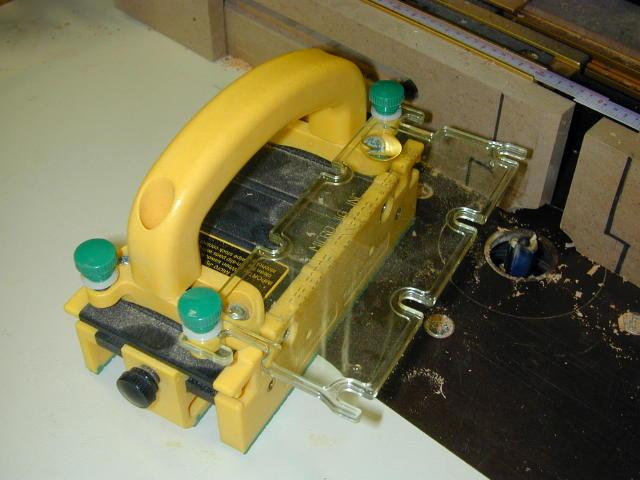

Continuing to improve the GRR-Ripper, Micro
Jig, Inc has released a new accessory called the Deflector/Connector (D/C).
Micro Jig provided me sample and I was able to put it to work on a pair of end tables.
Because I received the samples after all the table saw work was completed, I was
only able to actually used the D/C on my router table. As time goes on I'll update
ths report with the results of further use.

 The Deflector/Connector comes neatly packaged in a
small bag and requires some assembly although no tools are needed. The GRDC-020
package contains the D/C, instructions and 4 each of thumbscrews, nylon washers
and o-rings (pic right). If you don't already have the Handle Bridge accessory,
which is required to use the D/C, you'll need to get the GRDB-030 version which
includes the Handle
Bridge.
The Deflector/Connector comes neatly packaged in a
small bag and requires some assembly although no tools are needed. The GRDC-020
package contains the D/C, instructions and 4 each of thumbscrews, nylon washers
and o-rings (pic right). If you don't already have the Handle Bridge accessory,
which is required to use the D/C, you'll need to get the GRDB-030 version which
includes the Handle
Bridge.
As the name implies the D/C serves a couple of purposes. It can be used as a chip/dust
deflector, a GRR-Ripper connecting bridge or when attached to stick off the back
of the GRR-Ripper, a blade cover. We'll get into some of the uses in the following
paragraphs.
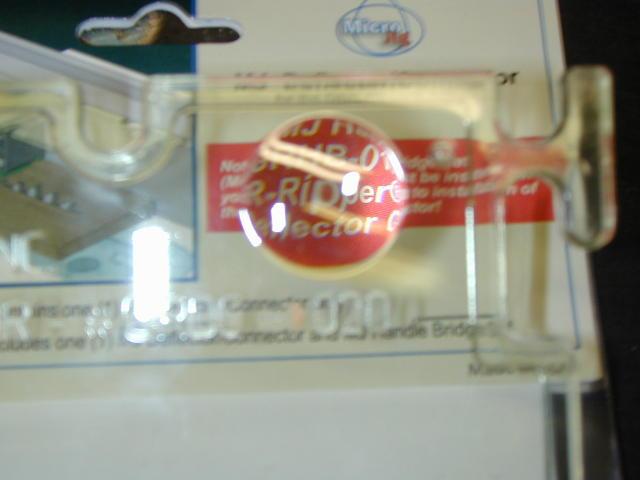
The D/C is constructed of Polycarbonate. It is designed to be attached in a number
of different arrangements and includes a little magnifier. Initially the D/C was
going to be made from the same polystyrene as the GRR-Ripper but it was thought
the clear material would make the D/C more practical...and I agree. With the D/C
installed you can still see everything.

 The
only assembly required are the thumbscrews. Just install a nylon washer and o-ring
on each thumbscrew, then install the thumbscrews on the Handle Bridge.
The
only assembly required are the thumbscrews. Just install a nylon washer and o-ring
on each thumbscrew, then install the thumbscrews on the Handle Bridge.
USE:
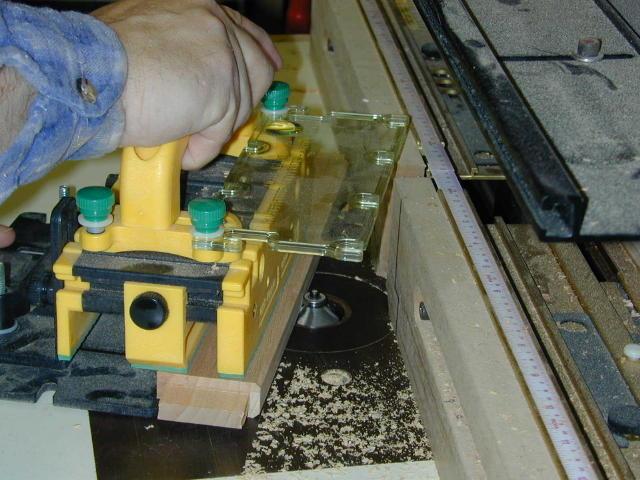 I used the GRR-Ripper and D/C to route some bevels
on table pieces. In this configuration the D/C is acting primarily as a bit guard
since most of the dust and chips are being shot horizontally. All fingers well away
from the danger zone.
I used the GRR-Ripper and D/C to route some bevels
on table pieces. In this configuration the D/C is acting primarily as a bit guard
since most of the dust and chips are being shot horizontally. All fingers well away
from the danger zone.
As I said earlier I didn't have a chance to use the D/C with my table saw so the
following pictures are posed for now until I do get to actually use it.
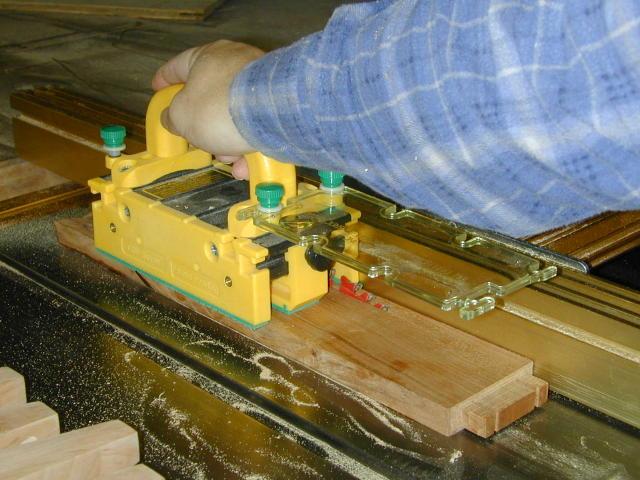
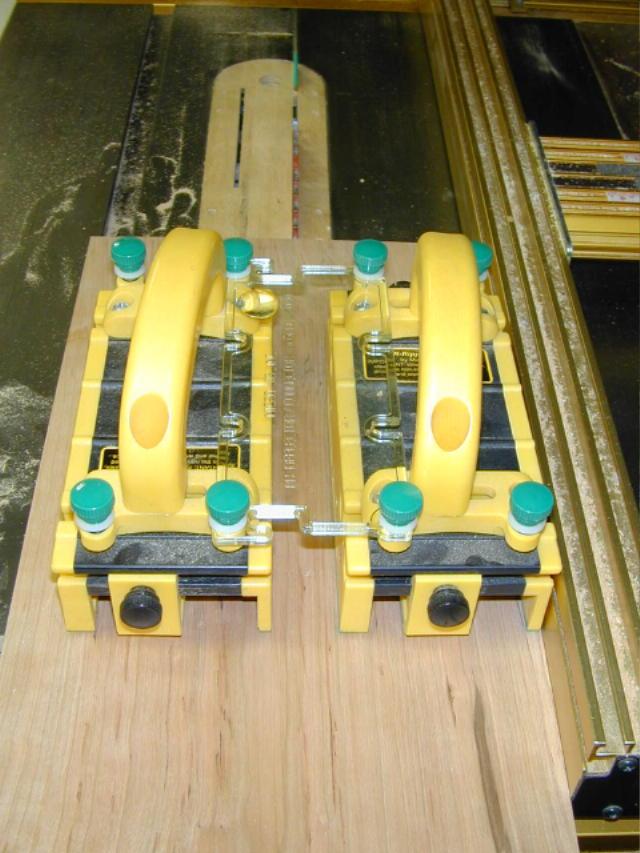 At
left the D/C is trailing the GRR-Ripper and acts as a blade guard. At right the
D/C is connecting two GRR-Rippers and acts as a spacer. The addition of the D/C(s)
to your GRR-Ripper arsenal will give you many more ready options for spacing the
GRR-Rippers and reduce the number of times you'll need to make a spacer for a particular
job.
At
left the D/C is trailing the GRR-Ripper and acts as a blade guard. At right the
D/C is connecting two GRR-Rippers and acts as a spacer. The addition of the D/C(s)
to your GRR-Ripper arsenal will give you many more ready options for spacing the
GRR-Rippers and reduce the number of times you'll need to make a spacer for a particular
job.
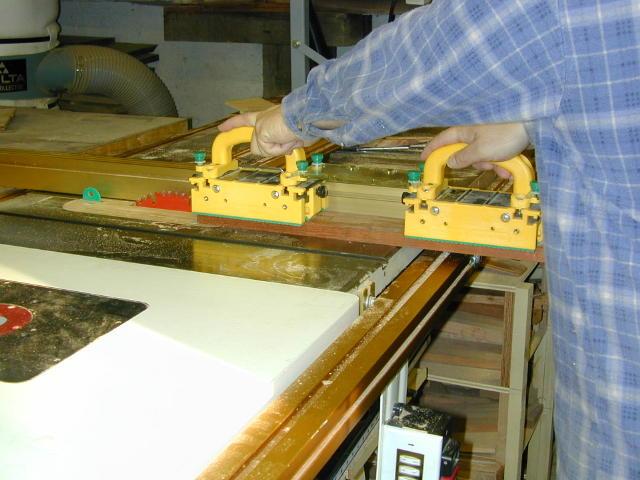
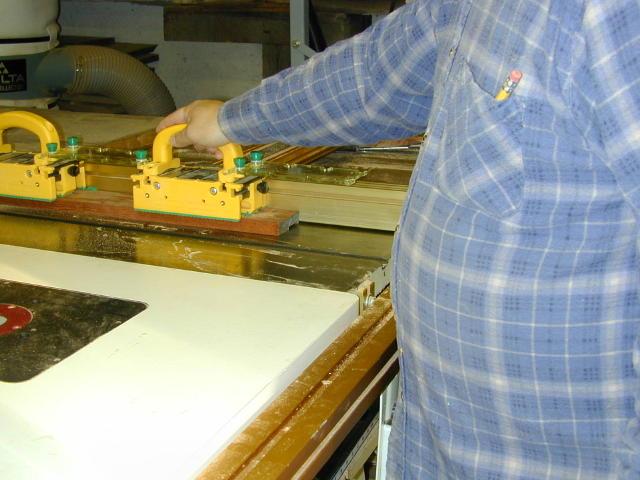 These
two photos depict using the D/C to connect two GRR-Rippers inline for a longer piece.
The purpose here is so that as your front hand and GRR-Ripper pass through the cut
you can let go of the front GRR-Ripper which is no longer needed and finish the
cut with the rear GRR-Ripper. Again, I haven't tried this yet, it was suggested
to me by Micro Jig as a possible use.
These
two photos depict using the D/C to connect two GRR-Rippers inline for a longer piece.
The purpose here is so that as your front hand and GRR-Ripper pass through the cut
you can let go of the front GRR-Ripper which is no longer needed and finish the
cut with the rear GRR-Ripper. Again, I haven't tried this yet, it was suggested
to me by Micro Jig as a possible use.
Conclusion:
For use on a router table I think the Deflector/Connector works well and provides
an added bit of protection. It is easy to install and remove and reconfigure. While
not having used it on the table saw I can see its utility as a connector or spacer
and as a blade cover and I'll update this report as I use the product more. I'm
pretty sure you won't find these on any of the online stores yet but I think it
will be available at the woodworking shows starting now
[Home]